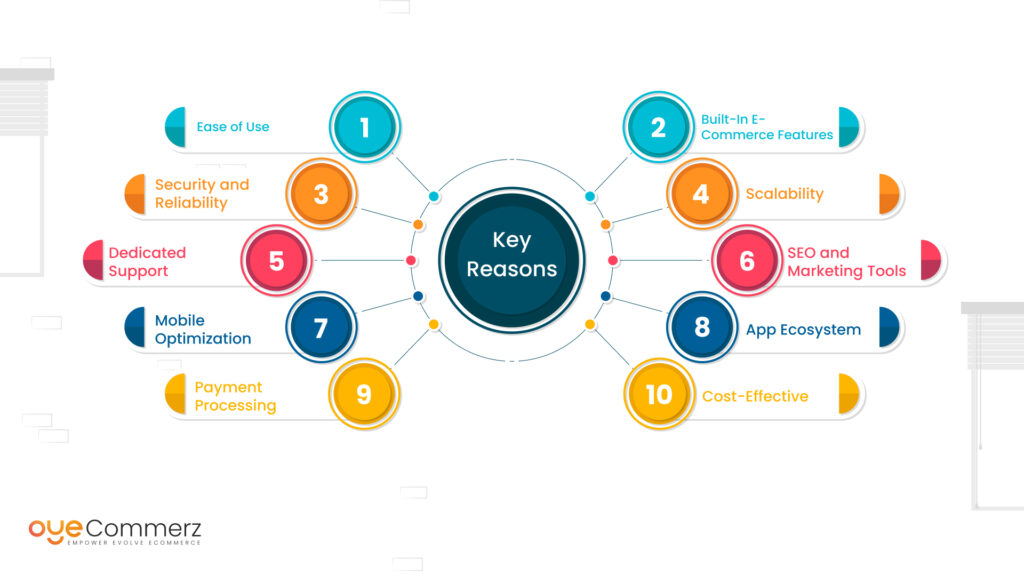Shifting from WordPress to Shopify marks an promising step toward streamlining your e-commerce processes. As companies expand, choosing a solution that aligns with scalability, UX, and customization becomes crucial. Shopify has emerged as a preferred choice for online merchants, providing unmatched adaptability, security, and ease of use. In this guide, we will delve into the transformative impact of this migration, discuss the benefits, and provide practical tips to ensure a smooth transition.
1. Why Switch from WP to Shopify?
WordPress, paired with WooCommerce, has served countless online stores. However, as companies expand, challenges like reliance on plugins, data risks, and complex setups often obstruct progress. Shopify, designed explicitly for e-commerce, addresses these issues with an comprehensive, user-friendly platform. Statistics back this shift—Shopify hosts over 4.4 million stores worldwide, with a documented 10% boost to sales conversion rates for many businesses after migration.
2. Shopify's Advantages for Thriving Online Stores
Shopify’s robust ecosystem is tailored for expanding brands. Its notable features include:
- Effortless Design Flexibility: Shopify provides over 80 expertly crafted themes.
- Integrated Tools: Features like Shopify Payments and built-in SEO streamline operations.
- International Expansion: Currency versatility and localization features enable brands to expand internationally.
Additionally, Shopify delivers an uptime rate of 99.98%, ensuring your website is always operational.
3. Getting Ready for Your WordPress-to-Shopify Transition
Prior to starting the migration process, assess your existing setup. Review inventory details, client information, and SEO performance. Resources such as Shopify’s Migration Kit or third-party solutions help ease the transition. Develop a detailed strategy, ensuring all resources—item details, images, and articles—are optimized for transfer.
4. Data Migration: A Critical Step
Data migration is a cornerstone of a smooth platform switch. When moving from WP to Shopify, focus on:
- Inventory Details: SKU, descriptions, and categories.
- Client Information: Emails, order history, and preferences.
- Search Engine Considerations: Preserve meta tags, URLs, and forwarding paths to maintain search rankings.
Leverage apps like LitExtension to facilitate seamless migration while minimizing errors. Shopify SEO setup
5. Tailoring Your Shopify Store to Fit Your Brand
After the move, customizing your Shopify store helps it reflects your brand. Utilize Shopify’s drag-and-drop editor to design pages effortlessly. Shopify's templates are mobile-responsive, ensuring a smooth UX across devices—a critical factor, given 74% of e-commerce traffic is generated by mobile users.
6. Maintaining SEO During Migration
SEO is vital for maintaining your visibility during migration. Shopify excels in SEO with organized link formatting, preloaded features, and seamless blog integration. Make sure you:
- Set up URL forwarding for existing links.
- Shopify for small businesses Enhance updated content with targeted phrases.
- Leverage plugins like Plug in SEO to track analytics after the switch.
7. Essential Tests After Migrating to Shopify
Once the migration is complete, run detailed checks.
Check: - Website speed (Shopify delivers faster speeds in contrast with WP).
- Functionality of payment gateways and transaction flow.
- Mobile responsiveness.
Quality assurance ensures your store delivers a smooth shopping journey from the start.
8. Case Study of a Successful Migration
One such migration success story is Gymshark, a sportswear company that transitioned to Shopify. After the switch, the company experienced a 60% boost in mobile sales and reduced site downtime. This highlights the capabilities of Shopify in driving online business success.
9. Overcoming Common Migration Issues
Migration is not without obstacles, such as data integrity and reconfiguring custom functionalities. However, Shopify’s robust support and third-party experts simplify the process. Collaborating with qualified Shopify developers ensures a trouble-free transition.
10. Starting Your Journey with Shopify
Switching from WP to Shopify represents a forward-thinking approach to e-commerce. By addressing scalability, streamlining operations, and enhancing the customer experience, Shopify enables companies to thrive in challenging industries.
Conclusion
Switching from WordPress to Shopify offers a smart solution that can greatly enhance your e-commerce success. With a well-structured strategy, the appropriate resources, and professional guidance, you can unlock new growth opportunities.
Ready to make the leap? Let’s discuss how our Shopify migration services can transform your online store. Get in touch today, or ask yourself: Can your business afford to miss out on Shopify’s growth potential?

 Yasmine Bleeth Then & Now!
Yasmine Bleeth Then & Now! Judge Reinhold Then & Now!
Judge Reinhold Then & Now! Christina Ricci Then & Now!
Christina Ricci Then & Now! Nancy McKeon Then & Now!
Nancy McKeon Then & Now! Lucy Lawless Then & Now!
Lucy Lawless Then & Now!